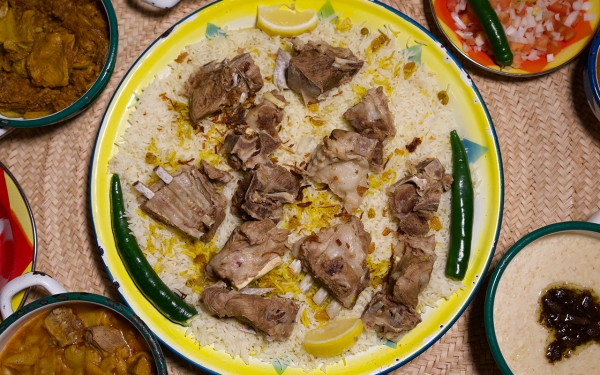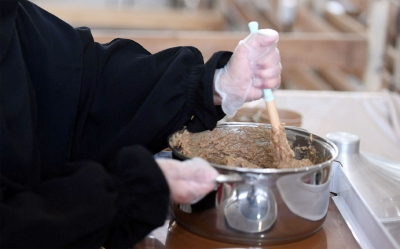
Saudi Kabsa, known in the remaining Gulf Cooperation Council (GCC) countries as Makbous, is one of the most prominent foods in the Kingdom of Saudi Arabia. This dish universally expresses the cultural and nutritional identity of the Kingdom. It is a somewhat greasy main dish and, therefore can be served for both lunch and dinner. Several dishes are derived from Kabsa, and eventually had different names, such as Haneeth, Mandi, and Maqluba.
Origins of the name
Linguistically, Kabsa is derived from the original word of kabs, which technically means pressure, indicating the method used in cooking Kabsa, as all ingredients are cooked or pressed in one pot. However, many dishes that are also based on rice and meat on top are called Kabsa as well.
In Saudi culture, Kabsa is served on special occasions, and it is the first hospitality meal presented to guests at lunch and dinner. Despite changes to the traditional serving etiquette in the Kingdom, such as in the open buffet and the various side dishes, Kabsa is usually at the forefront of the dishes served.
Traditional Saudi Kabsa is served on one plate, around which four to ten people are seated. During guests' visits, they are served one of the largest Kabsa dishes, referred to as al-Mufattah. It usually contains an entire cooked lamb that is placed on top of a single plate.
Traditions of Saudi Kabsa
Kabsa is traditionally eaten with the right hand, or as it is referred to in common local parlance as al-Khamss (or five in English). Usually, the person who prepares the food is the one who helps the guests in cutting and moving the meat closer to them and makes sure that the amount of food is sufficient.
Kabsa tops the traditional dishes of the Kingdom. Its main ingredients are based on rice mixed with meat or chicken. It is the most diverse traditional dish in terms of the cooking method, spices, and presentation.
Saudi Kabsa is technically the easiest dish to prepare, as all its ingredients are cooked or pressed in one pot. However, it reveals the level of experience in mastering the spice seasoning and determining how well the meat, vegetables, and rice are cooked.
Related quizzes
Related articles


